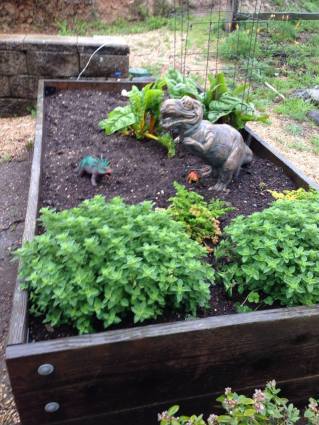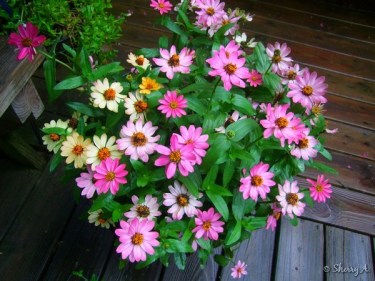New York is a city that thrives on extremes. It is a simultaneous home to the biggest brands and the smallest neighborhood businesses. It hosts both the largest collective gatherings and the most exclusive events. It clings to its historic past, while touting its position at the forefront of modern innovation. It houses some of the most densely populated urban space alongside several of the world’s most famous parks.
This last extreme–the coexistence of lush parks and urban growth–will be the focus of my post series on this blog. I grew up on a small farm in rural Northern California, and while I’ve spent a long time in cities such as London and San Francisco, I’d never lived in a metropolis quite like New York before this summer. After only three weeks here, I already find myself craving the shade of trees, the sound of blackbirds, and the smell of leaves in the sun. As such, I’ll use these blog posts to share what I learn about the city as I bop around to all the green spaces I can find. But first, let me provide a little background explaining why I care so much about seeking out nature, especially within a city.
Much of my life has consisted of chores. My parents knew that maintaining a farm (even a modest one) is a full-time job, and what better labor source is there than your own children? They put my siblings and me to work wherever they needed an extra hand: hacking at forests of waist-high thistles, painting (and re-painting) fences, watering the herb garden, digging postholes…no task was off-limits.

Eventually, after I’d abandoned the childhood belief that chores were torture methods devised by my diabolical parents, I realized that much of my love for my hometown stemmed from the intimate experience I’d had with the land. It’s something I’ve never left behind: years later, I still find that I best understand a place when I spend time in its parks and gardens, along its beaches and riverbanks…anywhere I can get my hands in the earth. Seeking out these parts of New York will undoubtedly teach me much about this city, even in the short time I am here.
Now that I’ve provided a bit of context, stay tuned for my next post, where I get to know one of many extremes in this new city.
July 3, 2014
This week’s addition brings a slightly different sort of adventure. I don’t have tales of any recent excursions, but I do have an idea brewing for a new project.
It disturbs me to admit that I miss weeding a garden. It’s easy to say that I miss choosing the seeds, watering the tiny shoots, and, of course, enjoying the product of the fully-grown plants. But weeding? Spending hours hunched over, tugging on stubborn roots and baking in the sun as my back ties itself in knots…no, thank you. However, after long enough away from a real garden, my memory will romanticize even the most menial of tasks. So here I am, looking for a way to start a new garden and experience weeding all over again. God help me.
In a studio apartment, cultivating a garden will prove difficult. There’s no room for deep planter boxes, and certainly not enough space for fearsome scarecrows:

Regardless, I remain confident that I can make this work. To begin with, the fire escape outside my window provides a good 3 square feet of space. As long as I don’t block the staircase, there’s plenty of room for plants like cilantro and basil, which will flourish even if I plant them now.

Another aspect of city gardening that I’m eager to try is the construction of hanging planters. I love how simple it seems–though I’m sure, as with all gardening projects I’ve undertaken, nothing will ever be too easy–to cut up a soda bottle, add the correct soil & a fledgling sprout, hang it up in a sunny corner, and water it accordingly. Plus, with any luck, such an isolated planting area won’t require enough weeding to change my mind!

Of course, no garden is complete without a few flowers. As much as I love the smell of dusty basil and the aroma of rich soil, it’s always nice to have a few bursts of color so I can involve all my senses in the process of gardening. Fortunately, zinnias are the perfect flowers for the amount of time I’ll be here and the time period during which I’m planting: they die with the first frost, and they bloom in late summer, so I can enjoy them just before my time in New York comes to a close.

Enough brainstorming. It’s time to realize this goal, and with it, bring the search for nature in New York a little closer to home. Until next time, folks.
July 17, 2014
After a short hiatus on this blog, I finally have a new discovery to recount! This past weekend, I was lucky enough to spend an evening in suburban Connecticut with Lindsay, in an attempt to unwind away from the city. Now, I should note that the exodus was not spurred by dissatisfaction with New York City in general. Rather, there’s something special about tree canopies that aren’t backed by legions of buildings, and silence so profound I feel as though I need to pop my ears. Plus, green space that isn’t manicured (hard to come by in the city) communicates something about the region as a whole, as it is the best showcase for all the plants that grow there more or less by chance, rather than at the whim of a landscaper.
When we were only 10 minutes outside the city, the gnarled walls of green had already closed in around the highway. That’s one of the first things that struck me about this coast in comparison to the West: everything is surrounded by trees. It’s especially striking in midsummer, with almost every bush, vine, and sapling in full bloom. Gliding (or crawling, depending on traffic) up and down the hills on our way out of New York, I’d get better glimpses of just how thick they were, their sprawl interrupted only where a railroad track flowed through or a steeple stabbed above the leaves.
Finally, we reached the town where Lindsay lives. The first thing I noticed was the wooden fences surrounding all the vast lawns and parks–they remind me of home, which I took to be a good sign.

And just when I thought I had begun to understand the layout of the town, the windy road upon which we’d been driving opened onto a massive lake. I couldn’t see where it ended on either side, because it curved gently out of sight into the forest on its banks. As we stepped out of the car to take it in, I knew I’d found exactly what I’d been craving–nothing from another car, another human, another house could be seen or heard. The lake was alive with activity, but it only came from fish jumping and birds swooping back and forth to catch the water bugs flitting lazily through the air.

After a long while of nothing more than drinking in the sunshine and listening to the birdsong, we headed back to Lindsay’s house. She’d already described her mother’s garden to me, so I looked for it as soon as we arrived. It was decked out in the loveliest summer colors, and featured one of my favorite types of flowers: black eyed Susans!

The bees buzzing among the lavender and the warmth of the first ripe tomatoes brought on some considerable nostalgia, but after an evening of watching the moon rise in that bright garden, those few hours make me confident that I will get to know this corner of the world just as well as my home.
July 24, 2014
This week rocks. Regardless of whether that statement is true (I think it is, personally; it’s been a lovely week so far), it provides a perfect opportunity to remember the value of punctuation! You see, unless I had planned to start this post with a non-sequitur, I should have written “this week: rocks.” However, I didn’t, so now I get to impose upon you my opinion of the week and my preachy punctuation point! Ha!
Anyway, I promise that I really am going to write about rocks today, and I will make it interesting. I came up with the idea for this post when I was watching baseball in Central Park the other day, perched on a massive grey slab reminiscent of The Stone Table.

I’ve always been fascinated by these rocks, because their towering bulks are so incongruous. While some of them seem like perfectly placed additions to the landscape, others seem to have materialized out of nowhere, interrupting the meadows and trees. I’ve also seen similar rock formations in other places: they’re dotted throughout the Botanical Gardens and Van Cortlandt Park in the Bronx, for example. Since I know so little about them, but I’ve spent so much time among them, I decided to do some research.
Apparently the rocks in Central Park are known as Manhattan schist. This is a type of rock that formed over 300 millions years ago. It’s a particularly hard type of rock, because it formed underneath massive mountain ranges that sprang up as the continents slid together to become Pangaea. When Pangaea finally separated millions of years later, this rock remained under most of Manhattan. In fact, while it’s visible in Central Park, it underlies most of the rest of the island as well, particularly in Downtown and Midtown.

Though the schist spreads underneath a large part of New York City, the rocks I saw in the Botanical Gardens and Van Cortlandt Park are mainly a different type: Fordham gneiss. This type of rock is significantly older than Manhattan schist–in fact, it’s said to be around a billion years old. Obviously, it’s sort of odd to see so much exposed bedrock, especially since the gneiss was created deep underneath other types of rock. The only reason it is visible is because of receding glaciers that brought it to the surface.

It’s kind of hard to believe that these integral parts of some of New York’s best parks are so old–the city has built itself up around them to make it seem as though they’ve always existed among the buildings and green spaces, relying on their proximity to the surface to construct its famous skyscrapers, and taking advantage of their smooth slopes to create natural playgrounds for the thousands of people who visit the parks every day. Makes me wonder what other ancient gems are hiding in plain sight…
Sources for today’s post: http://www.bbc.com/news/science-environment-22798563; http://www.nycgovparks.org/parks/VanCortlandtPark/history.